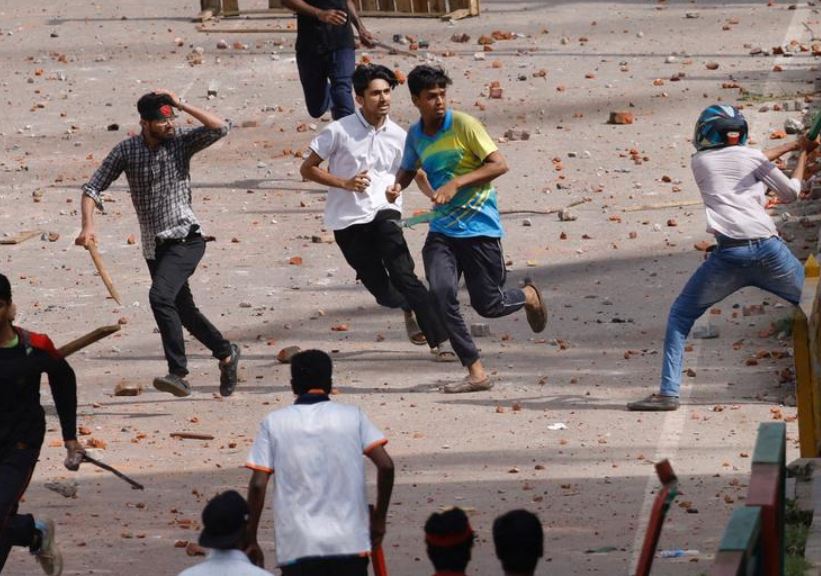Unrest Escalates Amidst Calls for Justice
Dhaka, Bangladesh – Thousands of Bangladeshis converged on the capital, their collective voices echoing a resounding demand for justice. Over 200 students and civilians lost their lives in a maelstrom of violence last month, ignited by protests against a contentious quota system for government jobs. The demonstrations, initially peaceful, spiraled into chaos as students clashed with both law enforcement and activists aligned with the ruling Awami League party. This tragic escalation has fueled widespread outrage, extending far beyond the student body.
Government’s Response and Protesters’ Defiance
In an attempt to quell the unrest, Prime Minister Sheikh Hasina extended an olive branch to student leaders, proposing dialogue to address their grievances. However, Nahid Islam, a prominent protest coordinator, vehemently rejected the offer, denouncing the government as complicit in the violence. Islam’s refusal underscores the deep-seated distrust between the protesters and the authorities, further exacerbating an already volatile situation.
A Nation on Edge: The Aftermath of Violence
The protests have plunged Bangladesh into a state of turmoil. Schools and universities nationwide have been shuttered, internet access curtailed, and a shoot-on-sight curfew imposed in an effort to restore order. The government’s heavy-handed response has only served to amplify the anger and resentment simmering beneath the surface. The situation remains precarious, with tensions running high despite the restoration of internet services and the reopening of essential institutions.
The Quota System: A Catalyst for Discontent
At the heart of the protests lies a controversial quota system that reserves a significant portion of government jobs for the descendants of veterans who fought in Bangladesh’s war of independence. Students argue that this system perpetuates inequality and favors supporters of Prime Minister Hasina, whose Awami League party traces its roots to the independence movement. Despite the Supreme Court’s recent decision to reduce the veterans’ quota, the protests have persisted, fueled by outrage over the excessive use of force and the government’s perceived indifference to the plight of the victims.
Key Takeaways:
- Widespread Protests: Thousands of Bangladeshis are protesting against the government’s handling of recent violence.
- Government’s Response: Prime Minister Sheikh Hasina has offered to talk with student leaders, but her offer has been rejected.
- Quota System Controversy: The protests were initially sparked by a controversial quota system for government jobs, but have since expanded to include broader grievances against the government.
- Uncertain Future: The situation in Bangladesh remains tense, and it is unclear how the protests will unfold in the coming days and weeks.
Soumya Smruti Sahoo is a seasoned journalist with extensive experience in both international and Indian news writing. With a sharp analytical mind and a dedication to uncovering the truth, Soumya has built a reputation for delivering in-depth, well-researched articles that provide readers with a clear understanding of complex global and domestic issues. Her work reflects a deep commitment to journalistic integrity, making her a trusted source for accurate and insightful news coverage.



